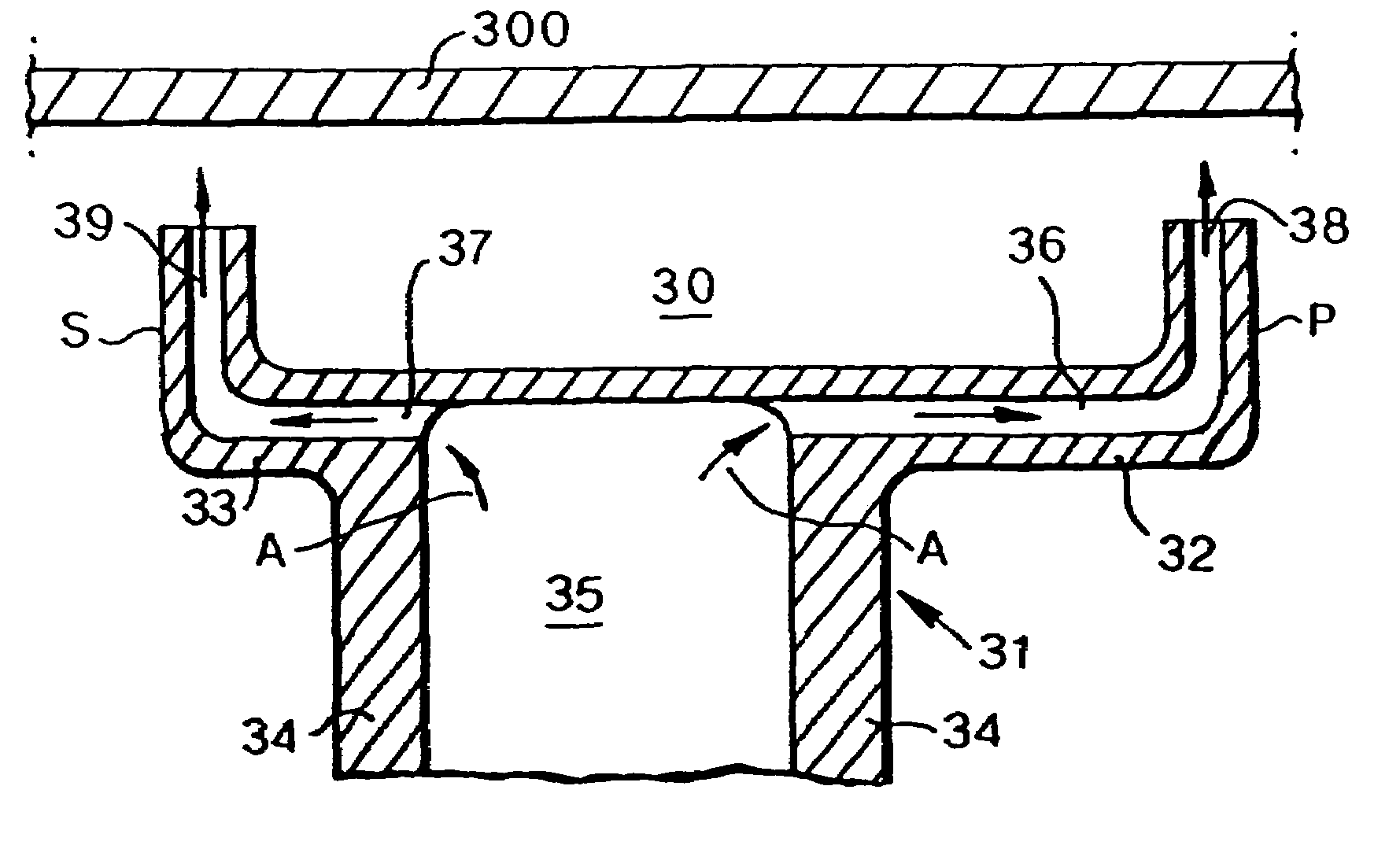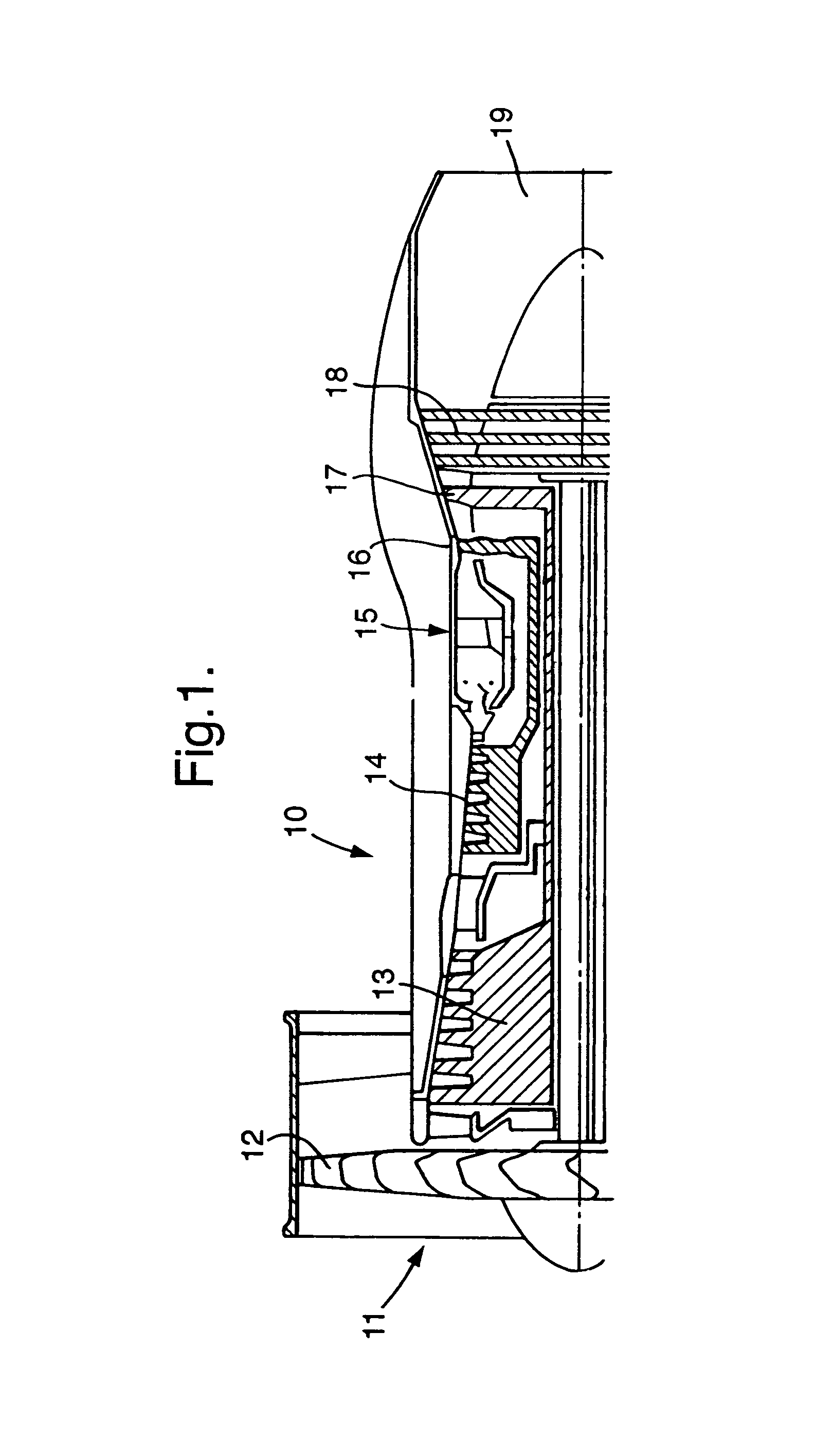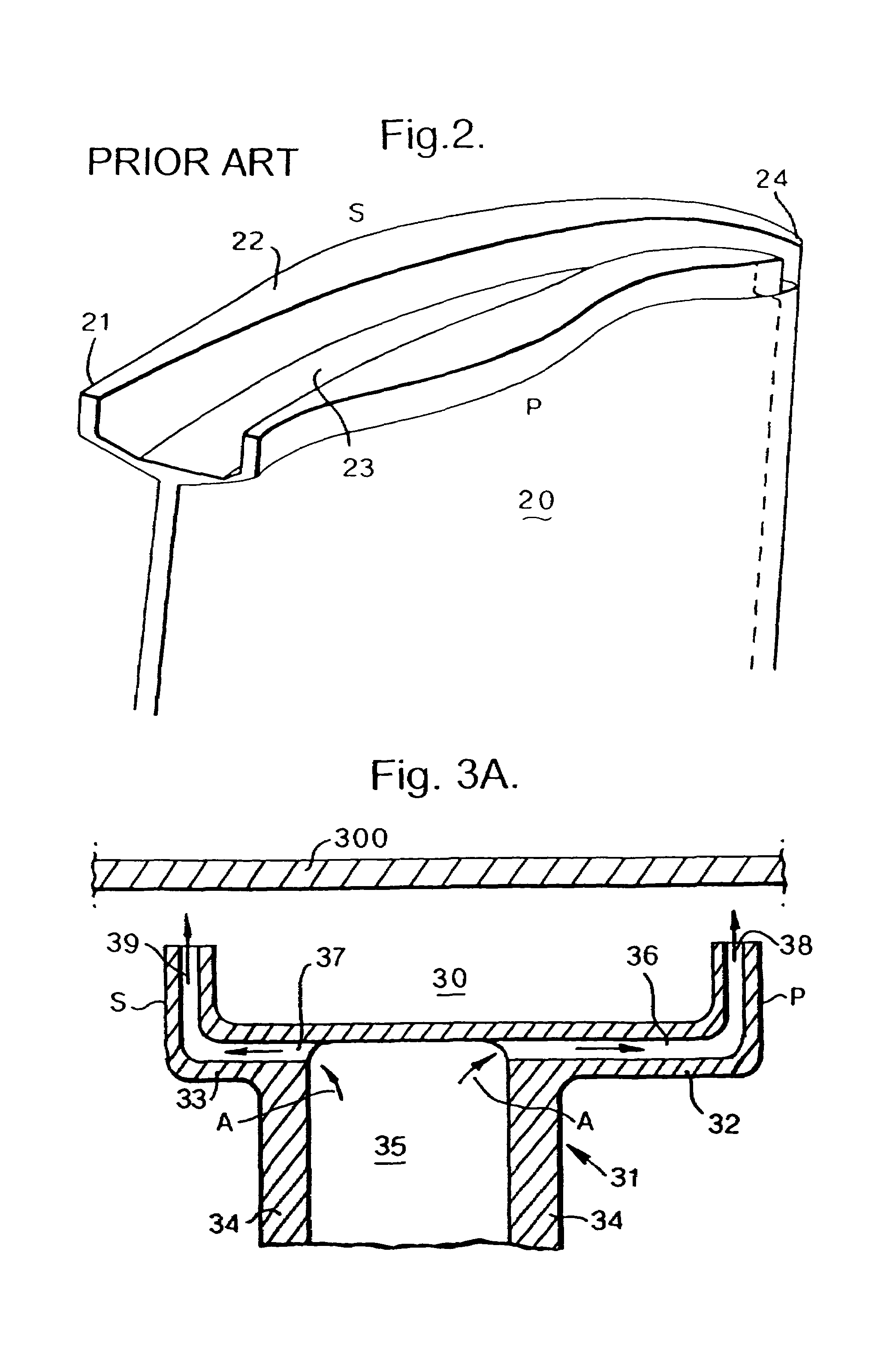Turbine rotor blades
a technology of turbine rotor blades and rotor blades, which is applied in the direction of machines/engines, rotary propellers, liquid fuel engines, etc., can solve the problems of reducing efficiency, increasing weight, and heating problems,
- Summary
- Abstract
- Description
- Claims
- Application Information
AI Technical Summary
Benefits of technology
Problems solved by technology
Method used
Image
Examples
first embodiment
[0034]FIG. 3 illustrates the rotor tip arrangement 31 in accordance with the present invention. The arrangement 31 incorporates winglets 32, 33 which extend laterally from aerofoil walls 34. Within the rotor blade aerofoil there is an internal root passage 35 which supplies coolant air in the direction of arrowheads A to passages 36, 37 within the winglets 32, 33. These passages 36, 37 extend to apertures 38, 39 to project coolant air flow outwardly. As can be seen the winglets 32, 33 include upstanding sections which define a gutter channel 30. In the above circumstances, it will be appreciated that the general configuration of the rotor tip arrangement 31 is similar to that depicted in FIG. 2 except for the features as outlined below.
[0035]Coolant air A is taken from the main aerofoil passage 35 through horizontal holes in the base of each winglet 32, 33.
[0036]The coolant air is ejected at the end of passages through apertures 38, 39. The apertures 38, 39 may continue up the sides...
second embodiment
[0041]FIG. 4 provides a further refinement with respect to at least the pressure side P of a rotor tip arrangement 41 in accordance with the present invention. Thus, the arrangement 41 has an aerofoil wall 44 which extends to a winglet 42 with a coolant flow B entering a passage 46 in the winglet 42 in order to present coolant air D through an aperture 48 in the side of the upstanding section of that winglet 42. Thus, the coolant air B flows over an upper surface 43 of the upstanding winglet 42 section in order to mingle with any leakage flow from the pressure side P. In such circumstances a coolant film is developed over the upstanding portion of the winglet 42 and this in association with the convective cooling through the passage 46 in the winglet 42 as well as mingling of the coolant flow with any leakage flow causes cooling of the arrangement 41. As previously, a stationary casing 400 may also be cooled by impingement of the coolant flow B projected angularly through the apertu...
third embodiment
[0043]In order to further improve resistance to leakage flow from the pressure side to the suction side of a turbine blade it is known to provide additional side cavities or trenches on either side of the open ended gutter channel. FIG. 6 illustrates the present invention in which such side cavities or trenches 67 are provided. Thus, an arrangement 61 comprises turbine aerofoil walls 64 from which winglets 62, 63 extend in order to present upstanding portions incorporating apertures 68a, 68b, 69a, 69b. Coolant air flow C passes through passages in the arrangement 61 in order to present coolant air flow towards a stationary casing 600. As can be seen, an open ended gutter channel 60 is defined between two central upstanding portions 65a, 65b of the winglets 62, 63 whilst cavity winglet sections 66a, 66b define the side cavities or trenches 67.
[0044]FIG. 6 shows how convective cooling in the form of radial holes or apertures 68a, 68b, 69a, 69b could be provided to each of the radial p...
PUM
 Login to View More
Login to View More Abstract
Description
Claims
Application Information
 Login to View More
Login to View More - R&D
- Intellectual Property
- Life Sciences
- Materials
- Tech Scout
- Unparalleled Data Quality
- Higher Quality Content
- 60% Fewer Hallucinations
Browse by: Latest US Patents, China's latest patents, Technical Efficacy Thesaurus, Application Domain, Technology Topic, Popular Technical Reports.
© 2025 PatSnap. All rights reserved.Legal|Privacy policy|Modern Slavery Act Transparency Statement|Sitemap|About US| Contact US: help@patsnap.com



